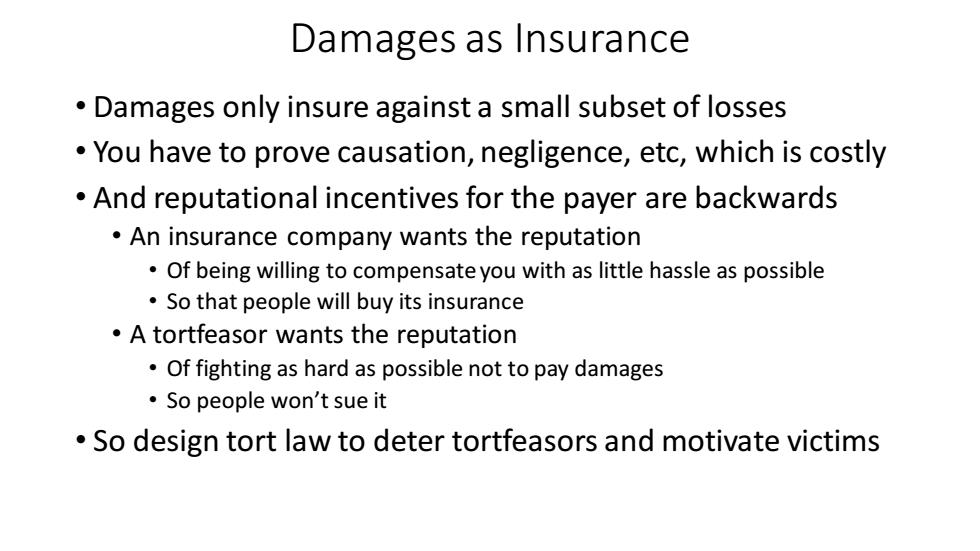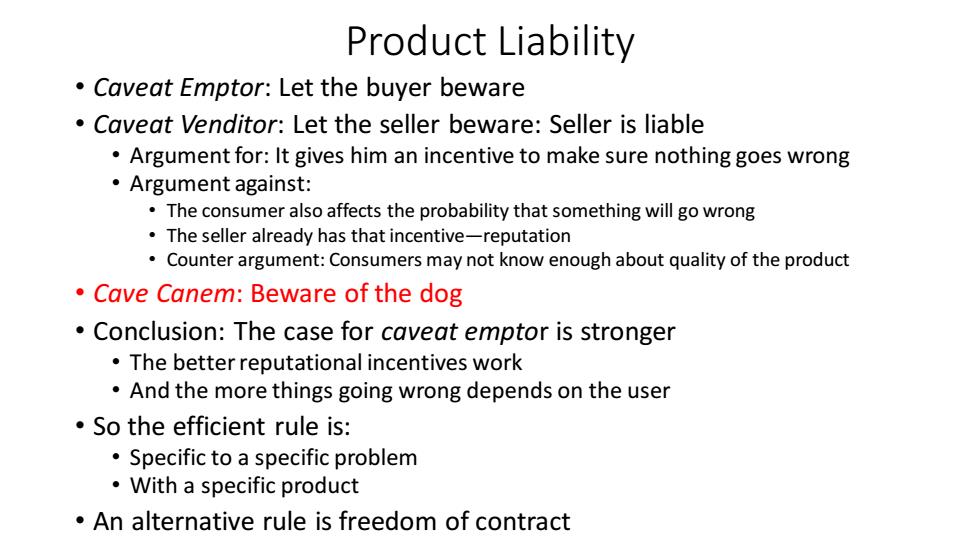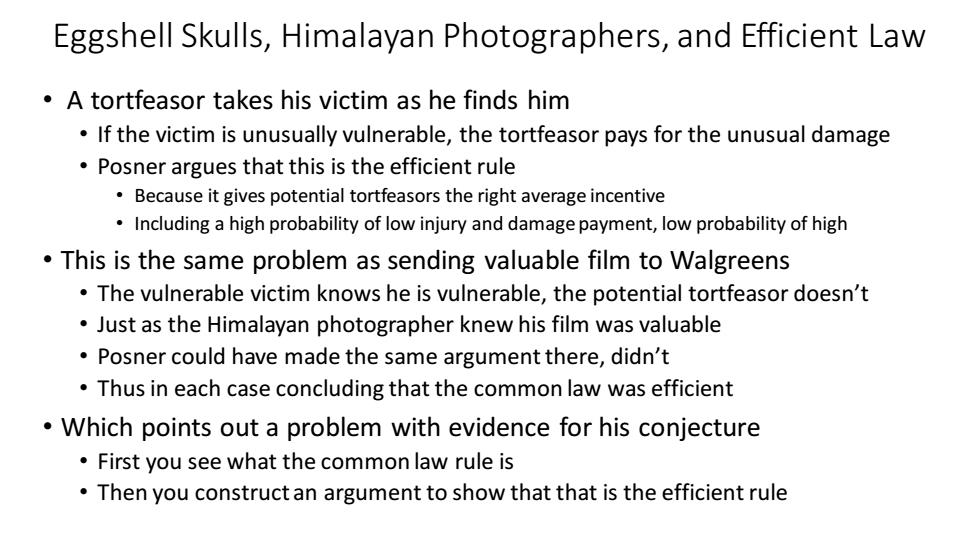
Damages Are Doing Triple Duty The damage payment for a tort is The penalty to the tortfeasor The reward to the successful plaintiff The compensation to the victim There is no reason to expect the right value to be the same for each
Damages Are Doing Triple Duty • The damage payment for a tort is • The penalty to the tortfeasor • The reward to the successful plaintiff • The compensation to the victim • There is no reason to expect the right value to be the same for each

Damages as Insurance Damages only insure against a small subset of losses You have to prove causation,negligence,etc,which is costly And reputational incentives for the payer are backwards An insurance company wants the reputation Of being willing to compensate you with as little hassle as possible So that people will buy its insurance A tortfeasor wants the reputation Of fighting as hard as possible not to pay damages ·So people won't sue it So design tort law to deter tortfeasors and motivate victims
Damages as Insurance • Damages only insure against a small subset of losses • You have to prove causation, negligence, etc, which is costly • And reputational incentives for the payer are backwards • An insurance company wants the reputation • Of being willing to compensate you with as little hassle as possible • So that people will buy its insurance • A tortfeasor wants the reputation • Of fighting as hard as possible not to pay damages • So people won’t sue it • So design tort law to deter tortfeasors and motivate victims

Product Liability Caveat Emptor:Let the buyer beware Caveat Venditor:Let the seller beware:Seller is liable Argument for:It gives him an incentive to make sure nothing goes wrong 。Argument against: The consumer also affects the probability that something will go wrong The seller already has that incentive-reputation Counter argument:Consumers may not know enough about quality of the product Cave Canem:Beware of the dog Conclusion:The case for caveat emptor is stronger The better reputational incentives work And the more things going wrong depends on the user So the efficient rule is: Specific to a specific problem With a specific product An alternative rule is freedom of contract
Product Liability • Caveat Emptor: Let the buyer beware • Caveat Venditor: Let the seller beware: Seller is liable • Argument for: It gives him an incentive to make sure nothing goes wrong • Argument against: • The consumer also affects the probability that something will go wrong • The seller already has that incentive—reputation • Counter argument: Consumers may not know enough about quality of the product • Cave Canem: Beware of the dog • Conclusion: The case for caveat emptor is stronger • The better reputational incentives work • And the more things going wrong depends on the user • So the efficient rule is: • Specific to a specific problem • With a specific product • An alternative rule is freedom of contract

Eggshell Skulls,Himalayan Photographers,and Efficient Law A tortfeasor takes his victim as he finds him If the victim is unusually vulnerable,the tortfeasor pays for the unusual damage Posner argues that this is the efficient rule Because it gives potential tortfeasors the right average incentive Including a high probability of low injury and damage payment,low probability of high This is the same problem as sending valuable film to Walgreens The vulnerable victim knows he is vulnerable,the potential tortfeasor doesn't Just as the Himalayan photographer knew his film was valuable Posner could have made the same argument there,didn't Thus in each case concluding that the common law was efficient Which points out a problem with evidence for his conjecture First you see what the common law rule is Then you construct an argument to show that that is the efficient rule
Eggshell Skulls, Himalayan Photographers, and Efficient Law • A tortfeasor takes his victim as he finds him • If the victim is unusually vulnerable, the tortfeasor pays for the unusual damage • Posner argues that this is the efficient rule • Because it gives potential tortfeasors the right average incentive • Including a high probability of low injury and damage payment, low probability of high • This is the same problem as sending valuable film to Walgreens • The vulnerable victim knows he is vulnerable, the potential tortfeasor doesn’t • Just as the Himalayan photographer knew his film was valuable • Posner could have made the same argument there, didn’t • Thus in each case concluding that the common law was efficient • Which points out a problem with evidence for his conjecture • First you see what the common law rule is • Then you construct an argument to show that that is the efficient rule